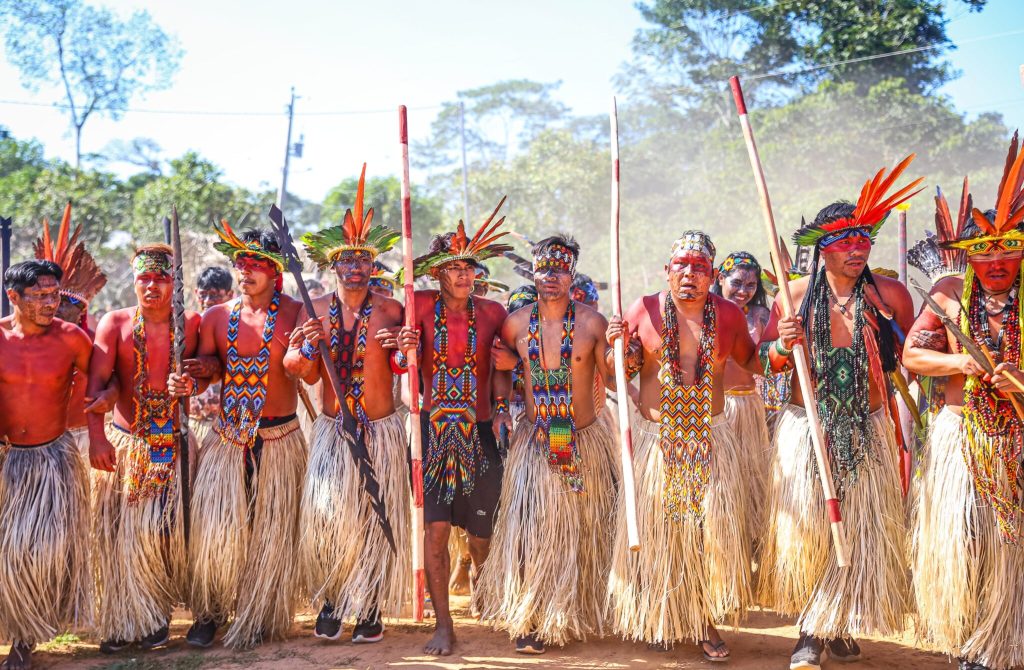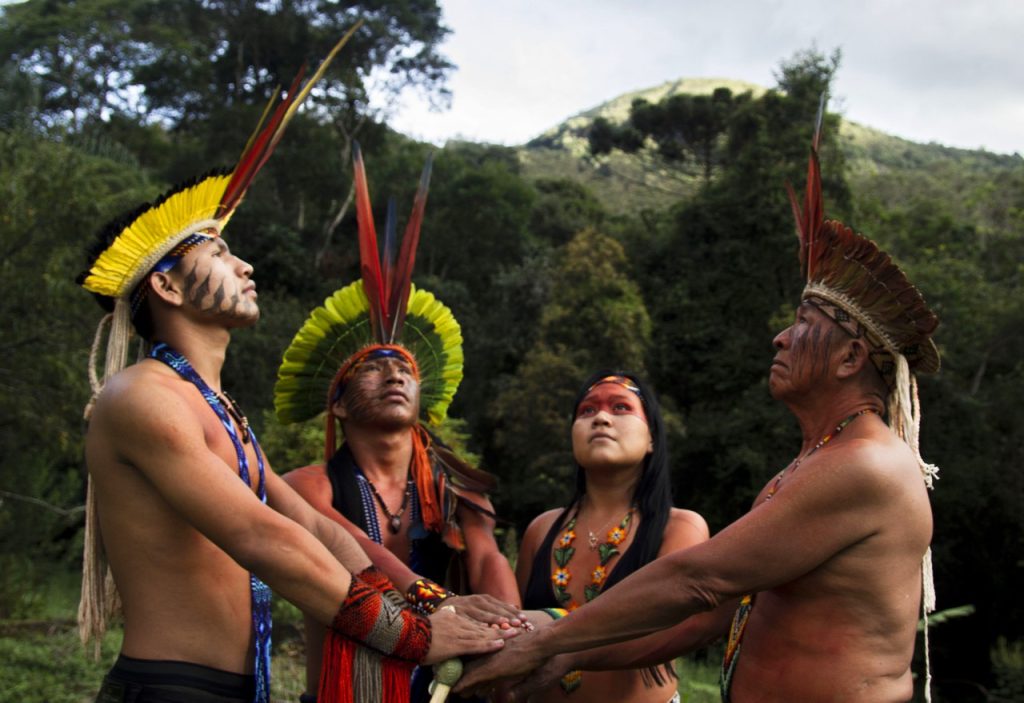Katukina Worldview
The Noke Kuin are known for their rich cultural heritage and shamanic spiritual practices. Although they are less known than other tribes such as the Yawanawá or the Huni Kuin, they share the same worldview with them, as well as the same sacred medicines, prepared with medicinal plants from the jungle.
The Noke Kuin, like their neighboring tribes, have a deep connection with Nature, and a spiritual consciousness that they develop through the use of Ayahuasca, a drink made with psychoactive plants, used in ceremonies along with Kambo, Rapé and Sananga.

Mocha, spiritual leader of the Noke Koi, speaks this way about the spirituality of his people: “We live with the ancestral spirits of medicine: snuff, ayahuasca, kambó, sananga and all the plants that our ancestors left for us. “Through ayahuasca we can see the spirit of the illness and feel the energy that is attacking our family.”
“The spiritual path brings a cleansing of the body, matter and thought, it brings light for all human beings in the world, through that force I count on you to come and join us with the same prayer, together with the Noke Koi people.”
Paje Peno, Noke Kuin healer and connoisseur of medicinal and sacred plants, says about snuff that it is “a medicine that our people use to feel the energy, to cleanse, to remove something bad that is in our body, also to remove bad thoughts and to have a positive thought.
We also use this medicine to cure an illness, and also to work on the spirit, to be happy, to feel love.”

“When you take rapé you connect, you observe yourself, you look at your thoughts” “you start to think good things for your family and for yourself too” – continues the herbalist – “We call snuff Romé Potó, which is to feel and think better.”
“There is no specific time to use it, but it is common to take it at 6 or 7 in the morning, and it is very common to use it three times a day, in the morning, at noon and in the afternoon. Those who are already very accustomed to using it can do so whenever they feel like it.”
Paulo Gómez, who lived for a year in a Noke Kuin community: “Kambó is a medicine that is totally different from any Western medicine. When you go to the doctor you need a quick solution, so they give you something to put the problem to sleep.
But kambó is an opportunity to be able to work on what you are complaining about because in reality it is not the cure. Kambó gives you the tools, the will and the awareness, so that you realize what makes you sick and are able to face it.”
“At least the Noke Kuin indigenous people, when extracting the kambo, treat the frog with great respect. You pass a stick over their back and a little white milk comes out, which is the kambo, and after extracting the kambo, the frog is left in the same place where it was found and from there it obviously waits a while and then returns. to extract it.
It is so much so that this little frog is very docile, it is not afraid of human beings.”
According to the legends of the Katukina tribe (Noke Koi), this frog is a very powerful being that was given to them by their deity more than 2,000 years ago, who taught them how to use it correctly and gave them the necessary knowledge to be able to survive in a jungle environment, which can sometimes be very hostile.
“According to the story they tell us, they were the first tribe to receive the kambo, because the kambo was not discovered, but was taught to them. And the person who taught it to him was his guide, his deity, whom they call Kokapin shari.
The story is told that there was a very sick woman, who could not be cured with any medicine that was in the jungle. Then this being taught them the kambo and taught them how to apply it, and with this they were able to save the woman. The origin of this practice is not well known, but it is said that it dates back more than 2,000 years,” concludes Paulo Gómez.
